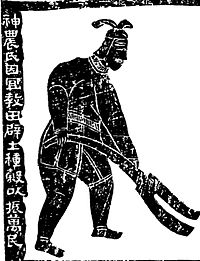In summary, the tea tree was first discovered by the Chinese, was first used by the Chinese, and was first cultivated by the Chinese. At the same time, China has the world's oldest tea artifacts, which provides evidence of China's origin as a tea tree from another perspective.
Tea has a long history in China. The cultural relics related to tea are very complicated, such as tea people, tea sets, tea books, tea paintings, and related tea cultural sites, etc., which are part of tea artifacts.

Shennong, who is closely linked to the discovery and use of tea, has many relics related to him in the land of China. Located in Hubei, close to the Shennongjia at the junction of Sichuan and Shanxi, it is a virgin forest with an area of more than 3,200 square kilometers and a maximum altitude of over 3,100 meters. According to preliminary statistics, there are more than 130 kinds of medicinal materials including tea, which is consistent with the legend that "Shennong ever suffered 72 poisons in trying herb medicines and tea is the detoxification for him". In addition, there are Shennong Tomb and Shennong Temple in Yanling town, in Hunan Province. Yanling town was originally in Chaling town. In the Western Han Dynasty, it was the main production area of tea in China. It can be seen from the above that Shennong has a close relationship with tea.


The tea style and tea species were first transmitted to North Korea and Japan, in the second half of the 6th century, Chinese Buddhism created Huayan and Tiantai, these two sects were introduced to North Korea successively, with the exchanges between Buddhist monks, tea culture was brought to Korea.
Japanese began drinking tea at the latest in 729 AD, that is, Emperor Shengwu of Japan on April 8 of the first year of the Tianping, convened a hundred monks to lecture in the court, and the next day, summoned tea, as for China brought back tea seeds grown in Japan, which was the middle of the Tang Dynasty.


According to historical documents, during the reign of Emperor Tang Dezong, the Japanese sorghum was the most acclaimed to the Chinese Temple of National Purity in Tiantai Mountain, China. In the first year of Tang Zhenyuan (AD 805), from the Tiantai, when he returned to Japan, he brought tea seeds and planted them in the Omi River in Japan. This is the earliest record of the spread of Chinese tea species. Today, the Temple of National Purity still exists, and after renovation, it is even more refreshing. In order to commemorate the communicator of this culture and art, the Buddhists of China and Japan, in the Temple of National Purity, have a monument to the future.